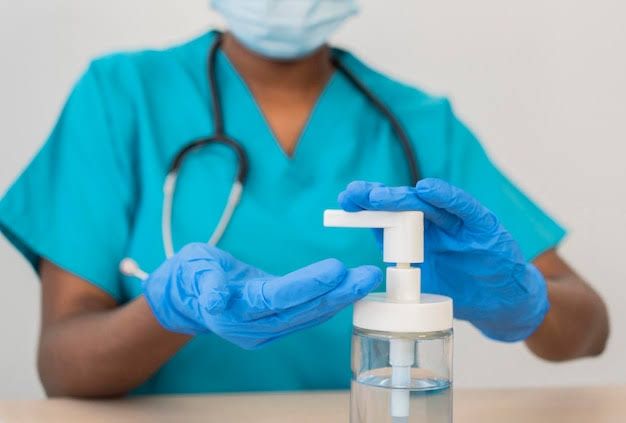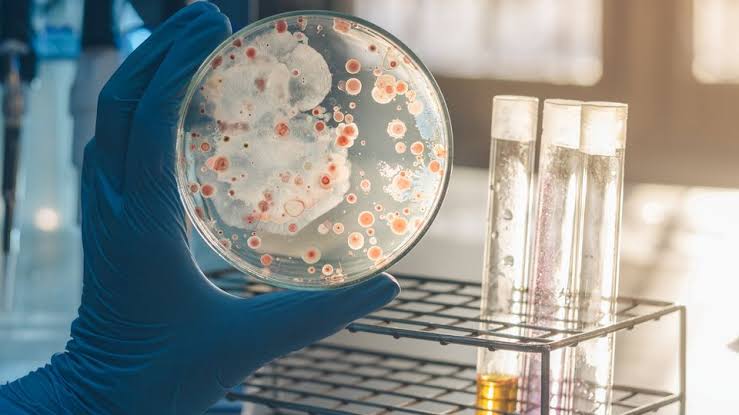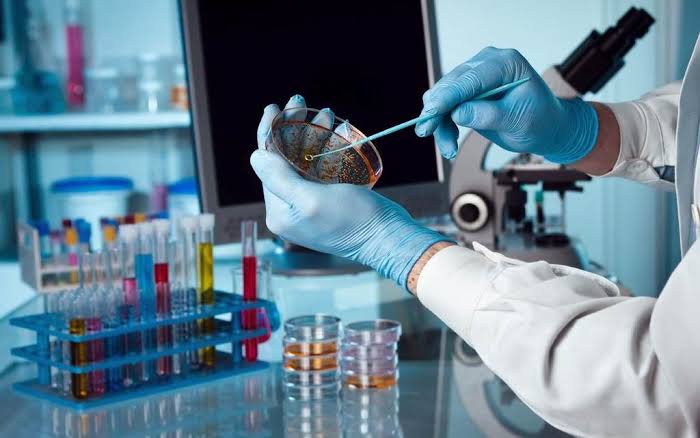
Definition of Sterilization and Disinfection
Sterilization is defined as a process that completely eliminates or destroys all forms of microbial life, including both vegetative cells and spores. This can be achieved through various physical methods (such as steam under pressure, dry heat, or radiation) or chemical methods (using sterilants like glutaraldehyde or hydrogen peroxide). The goal of sterilization is to ensure that no viable microorganisms remain on the treated items.
Disinfection, on the other hand, refers to the process that eliminates most pathogenic microorganisms from inanimate objects but does not necessarily kill bacterial spores. Disinfection can be categorized into different levels based on efficacy: high-level disinfectants (HLDs) can kill a significant number of microorganisms except for spores, while intermediate-level disinfectants (ILDs) and low-level disinfectants (LLDs) target specific groups of pathogens with varying effectiveness.
Principles of Sterilization and Disinfection
- Microbial Life Understanding: Both sterilization and disinfection are based on an understanding of microbial life forms. Different techniques are employed depending on whether the target is vegetative bacteria, viruses, fungi, or spores.
- Method Selection: The choice between sterilization and disinfection depends on the intended use of the medical device or instrument:
- Items that come into contact with sterile tissues require sterilization.
- Items that contact mucous membranes may require high-level disinfection.
- Non-critical items that only touch intact skin may require low-level disinfection.
- Efficacy Testing: Both processes must be validated through rigorous testing to ensure their effectiveness. This includes laboratory investigations to assess how well a method reduces microbial load and clinical studies to confirm its effectiveness in real-world settings.
- Environmental Considerations: The environment plays a crucial role in infection control; therefore, proper cleaning before disinfection or sterilization is essential to remove organic matter that can shield microbes from these processes.
- Compliance with Guidelines: Adherence to established guidelines for sterilization and disinfection is critical in healthcare settings to prevent outbreaks of infections due to improper practices.
- Chemical Agents and Physical Methods: Various agents are used for both processes:
- For sterilization: steam under pressure (autoclaving), ethylene oxide gas, hydrogen peroxide gas plasma.
- For disinfection: glutaraldehyde, ortho-phthalaldehyde (OPA), hypochlorite solutions for high-level disinfection; alcohols and quaternary ammonium compounds for low-level disinfection.
- Monitoring and Quality Control: Regular monitoring through biological indicators (e.g., spore tests) ensures that sterilizers are functioning correctly, while chemical indicators can help verify that disinfection protocols have been followed properly.
In summary, understanding the definitions and principles behind sterilization and disinfection is essential for effective infection control in healthcare settings.
Clinical Uses of Common Disinfectants and Their Mode of Sterilization
Disinfectants play a crucial role in healthcare settings by reducing the risk of infection through the elimination or inactivation of pathogenic microorganisms. The choice of disinfectant depends on the type of surface, the level of contamination, and the specific pathogens targeted. Below are some common disinfectants used clinically, along with their modes of action and sterilization.
1. Alcohols (Ethyl Alcohol and Isopropyl Alcohol)
Alcohols are widely used as disinfectants in clinical settings due to their rapid bactericidal activity. Ethyl alcohol (ethanol) and isopropyl alcohol (isopropanol) are effective against a broad spectrum of microorganisms, including bacteria, fungi, and viruses.
- Mode of Action: The primary mechanism by which alcohols exert their antimicrobial effect is through the denaturation of proteins. This process is enhanced in the presence of water; therefore, solutions containing 60%–90% alcohol in water are most effective. For instance, ethyl alcohol at concentrations between 60%–80% can effectively kill tissue phases of certain fungi like Cryptococcus neoformans and Histoplasma capsulatum. However, they do not destroy bacterial spores.
- Clinical Uses: Alcohol-based hand sanitizers are commonly used for hand hygiene before procedures or after contact with patients. They are also employed for disinfecting surfaces and medical instruments that do not penetrate skin or mucous membranes.
2. Chlorhexidine
Chlorhexidine is a cationic antiseptic that has both bactericidal and bacteriostatic properties.
- Mode of Action: Chlorhexidine disrupts microbial cell membranes and precipitates cytoplasmic components, leading to cell death. It is effective against gram-positive bacteria, some gram-negative bacteria, and certain viruses.
- Clinical Uses: It is often used for preoperative skin disinfection, oral rinses to reduce dental plaque, and as a surgical scrub for healthcare personnel.
3. Hydrogen Peroxide
Hydrogen peroxide acts as an oxidizing agent that produces free radicals capable of damaging cellular components.
- Mode of Action: Its antimicrobial activity arises from its ability to generate reactive oxygen species that can damage DNA, proteins, and lipids within microbial cells.
- Clinical Uses: Hydrogen peroxide is utilized for wound cleaning and disinfection due to its effervescence that helps remove debris from wounds. It can also be used for surface disinfection in healthcare facilities.
4. Sodium Hypochlorite (Bleach)
Sodium hypochlorite is a potent disinfectant known for its effectiveness against a wide range of pathogens including bacteria, viruses, fungi, and spores.
- Mode of Action: It works by releasing chlorine when dissolved in water; this chlorine reacts with cellular components leading to cell lysis.
- Clinical Uses: Commonly used for disinfecting surfaces contaminated with blood or other bodily fluids due to its efficacy against pathogens such as Clostridium difficile. It’s also utilized in water treatment processes.
5. Quaternary Ammonium Compounds (Quats)
Quats are surfactants that possess antimicrobial properties against various bacteria but have limited effectiveness against spores.
- Mode of Action: They disrupt microbial cell membranes leading to leakage of cellular contents which results in cell death.
- Clinical Uses: Quaternary ammonium compounds are often found in surface disinfectants used on non-critical surfaces like countertops or equipment that does not come into direct contact with patients.
In summary, the selection and application of disinfectants depend on their efficacy against specific pathogens as well as their safety profiles for use on various surfaces within clinical environments. Proper understanding and adherence to guidelines regarding concentration levels and exposure times are essential for achieving effective disinfection outcomes.
Physical and Chemical Agents of Sterilization
Sterilization is a critical process in microbiology and healthcare, aimed at eliminating all forms of microorganisms, including bacteria, viruses, fungi, and spores. This can be achieved through various physical and chemical agents. Below is a detailed discussion of both categories.
Physical Agents of Sterilization
- Heat
- Moist Heat: This method utilizes steam under pressure to achieve sterilization. The most common form is autoclaving, which typically operates at 121°C for 15-30 minutes. Moist heat kills microorganisms by denaturing proteins and disrupting cell membranes.
- Dry Heat: Involves the use of hot air to sterilize materials that can withstand high temperatures without moisture. Common methods include using an oven set at temperatures ranging from 160°C to 180°C for varying durations (e.g., 160°C for 2 hours). Dry heat works by oxidizing cellular components and denaturing proteins.
- Radiation
- Ultraviolet (UV) Light: UV radiation has germicidal properties due to its ability to damage DNA in microorganisms, preventing replication. It is often used for surface sterilization in laboratories and hospitals.
- Ionizing Radiation: This includes gamma rays or X-rays that penetrate deeply into materials, effectively killing microorganisms by causing significant damage to their DNA.
- Filtration
- Filtration is a method used primarily for sterilizing liquids and gases that cannot withstand heat. Filters with pore sizes small enough (typically 0.22 micrometers) can physically remove bacteria and larger viruses from solutions.
- Sunlight
- Natural sunlight has germicidal effects due to its ultraviolet component, which can reduce microbial load in water bodies or on surfaces exposed to direct sunlight over time.
Chemical Agents of Sterilization
- Gaseous Agents
- Ethylene Oxide (EtO): A widely used gas for sterilizing heat-sensitive medical devices and equipment. It works by alkylating proteins and nucleic acids within microorganisms.
- Formaldehyde: Used as a gas or in solution; it acts as a potent disinfectant by cross-linking proteins and nucleic acids.
- Liquid Chemical Sterilants
- Glutaraldehyde: A high-level disinfectant effective against bacteria, viruses, fungi, and spores when used in appropriate concentrations (typically 2%).
- Peracetic Acid: Effective against a broad spectrum of pathogens; it decomposes into non-toxic by-products after use, making it suitable for sterilizing medical instruments.
- Antiseptics
- While not strictly sterilants, antiseptics such as alcohols (e.g., ethanol or isopropanol) are used on living tissues to reduce microbial load before surgical procedures.
- Disinfectants
- Chemicals like chlorine compounds or quaternary ammonium compounds are utilized on surfaces to kill pathogens but may not achieve complete sterility depending on concentration and contact time.
In summary, both physical methods like heat, radiation, filtration, and sunlight as well as chemical agents such as gaseous agents and liquid chemical sterilants play crucial roles in the effective sterilization of medical equipment and environments.







